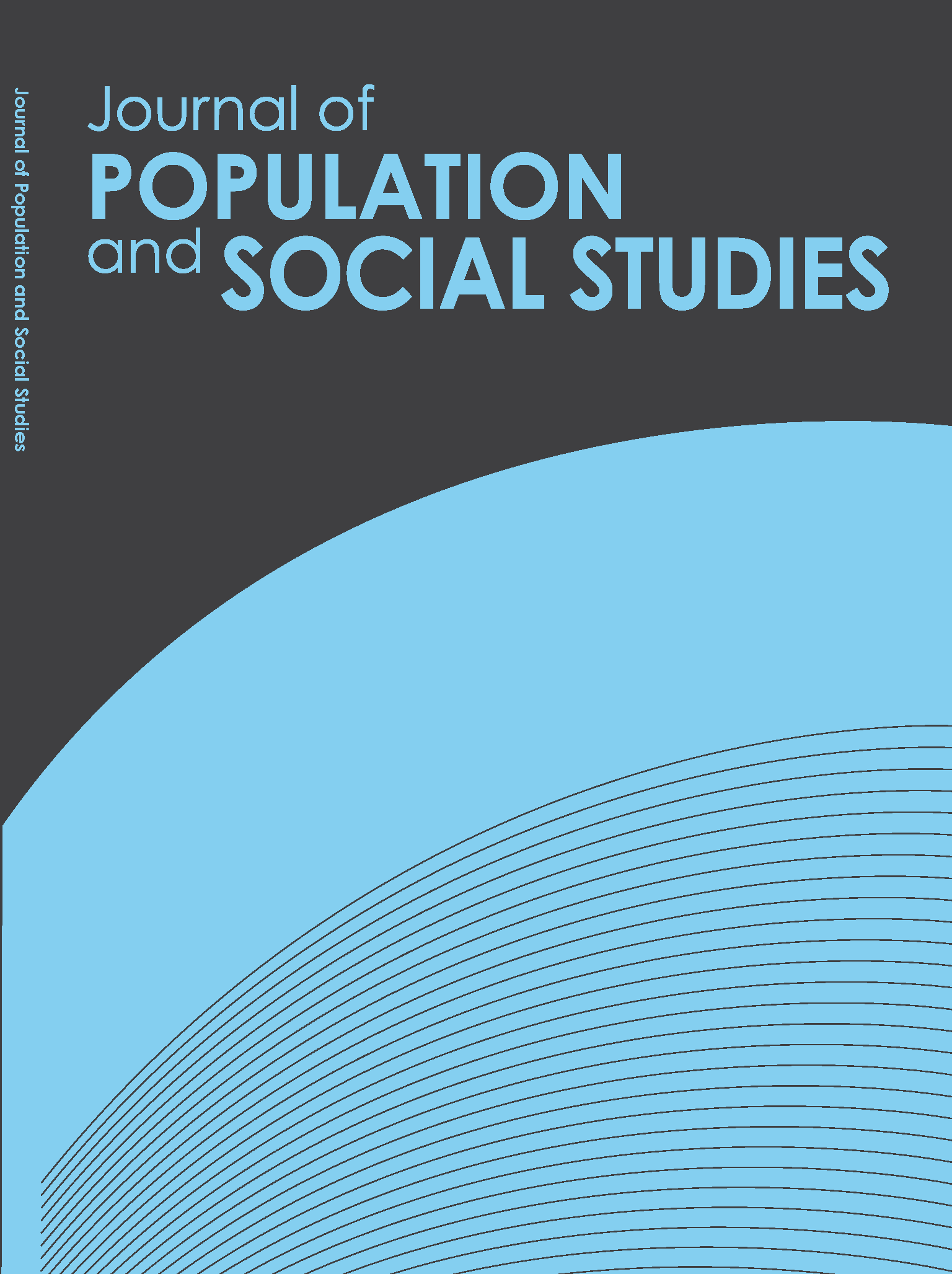The Impact of Household and Community Risk Factors on Labor Force Aged Mortality in Nang Rong, Thailand
Main Article Content
Abstract
This study examines the influence of household and community risk factors on labor force aged mortality. The investigation observed the effect of both social context as measured by household factors and community variables which are related to the exposure to disease factors and the resistance to disease variables on various causes of death. To explore and measure the size of the effect, the examination employed longitudinal data from Nang Rong Project between 1994 and 2000. The unit of analysis
was population who were among the labor force age. The survival analysis under the method of piece-wise exponential hazard model with left truncated was used. Furthermore, the study also employed the Verbal Autopsy method to examine the accuracy of the cause of death.
The major causes of death were mostly from non-communicable disease,
external causes, and communicable disease respectively. Household sanitation and household density had some effects on mortality. When considering community risk factors, the community density and the number of health personnel in the areas had an effect on mortality. For instance, when population in community increases, the hazard
of dying increases. In addition, when number of health personnel increases, the hazard of dying decreases.
was population who were among the labor force age. The survival analysis under the method of piece-wise exponential hazard model with left truncated was used. Furthermore, the study also employed the Verbal Autopsy method to examine the accuracy of the cause of death.
The major causes of death were mostly from non-communicable disease,
external causes, and communicable disease respectively. Household sanitation and household density had some effects on mortality. When considering community risk factors, the community density and the number of health personnel in the areas had an effect on mortality. For instance, when population in community increases, the hazard
of dying increases. In addition, when number of health personnel increases, the hazard of dying decreases.
Article Details
How to Cite
Polprasert, W., Sawangdee, Y., Guo, G., Sirirassamee, B., & Porapakkham, Y. (2007). The Impact of Household and Community Risk Factors on Labor Force Aged Mortality in Nang Rong, Thailand. Journal of Population and Social Studies [JPSS], 15(1), 35–52. retrieved from https://so03.tci-thaijo.org/index.php/jpss/article/view/84591
Section
Research Articles


